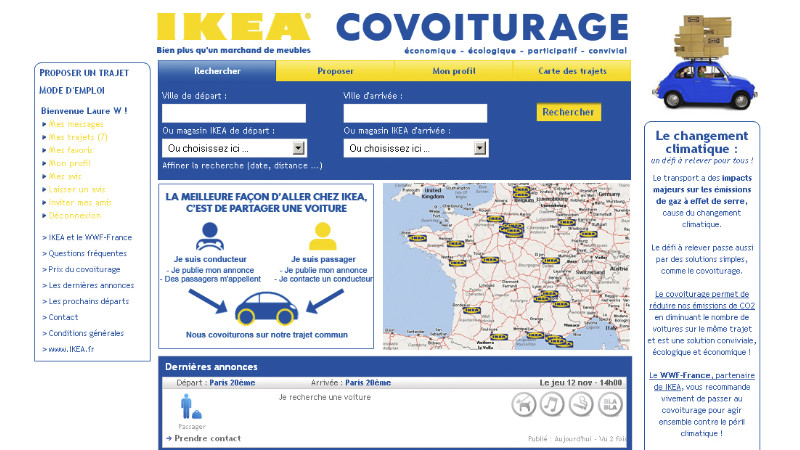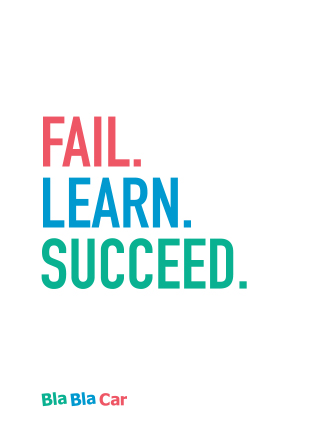When Fred Mazzella studied in Stanford, it was 1999 and startups were popping up all over Silicon Valley. Entrepreneurs were dropping out of class to join the tech bubble frenzy. Or risking it to create their own companies. Fred was inspired by their strong willingness to try, fail, learn and succeed. It was here when he realized that becoming an entrepreneur could be part of his future.
In fact, Fred was brimming with ideas. He explored the possibility of installing in-office UV ray tanning screens which would allow employees to tan whilst working. After learning that airplane tyres wear out quickly after spinning from zero to hundreds of mph in a fraction of a second when the plane lands, he investigated the addition of a propeller on the tyres to make them spin before landing and thus expand their lifespan. He built a platform for customers to share their letters of complaint to brands. He spent countless hours developing a sudoku-like game called Honeybee. He dabbled in horse bets, running algorithms to predict the result of horses. And together with friends, he started BusyParis, a platform where expats in Paris could rent apartments. For some ideas, patents were submitted. For others, they were put aside. Being pragmatic and tough on ideas helped immensely. If it doesn’t work, it’s time to move on.
But when the right idea falls, it should inspire enough passion to commit all of life’s energy too. That’s exactly what happened when the idea of BlaBlaCar was born in 2003. Together with co-founders, Francis Nappez and Nicolas Brusson, whom Fred met a few years later on his journey, the trio built a new global people-powered travel network. Like any startup, it wasn’t easy from the get-go. It still isn’t. Whether it’s a new product feature or a marketing campaign rollout, trial and error is key. Identifying mistakes, sharing learnings from them, and moving forward without duplicating them is what progress is all about. And that’s the premise behind one of BlaBlaCar’s core values “Fail, Learn, Succeed”.
Failure leads to invaluable learnings
Fred once asked his MBA professor at INSEAD Business School whether it was possible to avoid having a business model and to simply provide the carpooling service for free. “You need a business model or you’ll die,” was the instant reply. Harsh words, but it was the motivation that was needed to start exploring other options and to begin taking risks. Looking for a sound business model which would allow the creation of a sustainable economic path whilst creating value for members of the community ended up taking five years. Five years in which the team opened themselves up for failure, tested six various business models, and gained invaluable learnings along the way.
Back in 2007, there were many requests from external companies and local authorities around France interested in integrating a carpooling platform into their corporate intranet. They wanted to provide their employees with a platform to facilitate travel back and forth from home to work; or in other words short distances of up to 20km. Despite it being off-track from the initial idea of long-distance carpooling (which often encompasses travelling between cities, averaging out at a distance of 300km), the team realized that companies were willing to have this kind of business-to-business service and pay for it too, so why not cater to their needs?

IKEA, Carrefour and the Hospitals in Marseille were among the first to buy these platforms with an additional 200 more companies opting in over the years. Although a source of revenue for BlaBlaCar until 2011, enormous amounts of time, resources and attention were being spent on delivering these multiple customized platforms to various companies, and there was no scalable solution as every customer had different requirements. Over time it became clear that this business-to-business model would not flourish and the decision to phase out the model was taken in 2012.
The other models before The Model
In the meantime, the Premium model was an option which was deployed, whereby the overall service remained free yet members had the option to sign up for additional services. By paying a monthly or annual subscription, VIP member’s would have the benefit of having their posts ranked first in search engines and would receive text messages each time they had a request. However, it was soon realized that it simply wasn’t fair for someone to be at the top because they had paid for this status, nor was it financially viable in the long run.
Implementing a monthly plan with a flat fee was another business model considered, yet quickly discarded. With some members using BlaBlaCar sporadically a few times per year and others using it frequently several times a week, it was impossible to devise a formula subscription that was fair for all. Like many internet players at the time, BlaBlaCar also tested the advertising model. With trust being fundamental to BlaBlaCar, there were concerns that personal data of members may be passed on to affiliates for commercial purposes and the decision was quickly taken to not go down this route, with no personal data ever being sold.
The Phone Bridge model came next. Members could choose to hide their mobile number, whilst remaining reachable via a pay telephone bridge. With members paying for the phone-bridge connection, revenue would be split between the phone operator, the platform hosting the bridge and BlaBlaCar. It wasn’t the most reliable of systems as there was no guarantee that the receiver would pick up the phone which could lead to frustration on the caller’s behalf. Additionally, it wasn’t globally scalable due to various telephone payment models being in place across different counties.

The last model to be explored in the 5-year learning curve was the Event Agenda model. Targeted at organizers of events, concerts, public festivals and also individuals organizing birthdays or weddings, it allowed them to create a specific event page so guests could view all the pick-up/drop off points and could decide whether to travel together. Although in use for several years, a lot of back-end work and content moderation was required with not much return on investment.
When critical crossroads leads to success
The turning point for a new business model came after a ride left Francis reeling. Two of his passengers were already in the car and they were all patiently waiting for one more to show. Thirty minutes and several missed calls later, the missing passenger eventually picked up the phone. He had been asleep. Francis offered to pick him up directly from his house. The guy flatly responded by saying that he’ll just find another ride instead. That’s when Francis knew something needed to be done for these types of empty cancellations. Not only wasn’t it fair for the driver, but it wasn’t fair for the other passengers who turned up on time and were grateful for the ride. After years of toiling, the team knew that the transactional model, whereby passengers pay online before the scheduled ride, was what was needed.
Among all the business models that were thought of, the reason why this transactional model works best is because it brings back reliability and trust to the members of BlaBlaCar. Before online payments and booking fees were introduced, passengers would pay with cash in the car but could also cancel an hour before or even not show up at all without being penalized. In return, the drivers were overbooking because they were never sure if passengers would show up. This loop was lowering the overall trust that passengers and drivers had amongst each other. Now with today’s new business model, there’s mutual commitment between passenger and driver. As a result, the inefficiencies are erased and the number of cancellations are drastically reduced from more than 35% to less than 3%. Not only is the model fair and transparent, bringing with it growth and reliability, but it’s also scalable, meaning it can be rolled out internationally.
Fail, Learn, Succeed is what drives innovation
Einstein once said that insanity is doing the same thing over and over again and expecting different results. Staying true to Einstein, the opposite is encouraged at BlaBlaCar. Adopting a “Fail, Learn, Succeed” mindset is what drives innovation. Everyday new product features and tools are tested inside BlaBlaCar. Everyday the team continuously evolves the product through iterative processes. And everyday, everyone is constantly encouraged to not be shy about their failures but instead embrace another of BlaBlaCar’s core values, “Share More, Learn More”. By analysing honestly why something failed and by really taking the time to investigate what went wrong, the individual gets to the root cause of the problem, learns from it and shares it with others so that they won’t make the same mistake.

Because BlaBlaCar is made up of a serious team of determined people who are passionate about what they do, there is not one ounce of a blame culture in its DNA. Recognizing failure as a learning process and taking that risk to fail is what’s needed to successfully innovate and allows for individuals, teams and technology to evolve.
